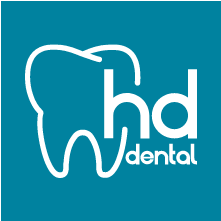Gingivitis
The most common inflammatory disease of the body is gingivitis, i.e. the inflammation of the gum tissue. Its symptoms are:
- red and swollen gums
- bleeding gums while brushing teeth, occasionally sudden bleeding
- development of gum pockets deeper than 2mm
Peridontitis
Untreated gingivitis will spread to the deeper lying tissues causing periodontitis, i.e. the inflammation of the supporting tissues of the teeth. Its symptoms are the following:
- continual inflammation of the gums
- deep and often bleeding pockets between the teeth and the gums (3-10mm)
- gingival recession, resulting in apparent lengthening of the teeth
- loose teeth in the later stages
According to the complexity of the disease, the treatment is carried out in several stages over several hours and weeks, sometimes even months.
Course of treatment
- Pre-treatment: The first step is cleaning the teeth and removing soft and hard plaque. The patient will also get advice regarding personal oral hygiene. The patient has to be able to keep clean his/her teeth, the spaces between the teeth and gingival pockets using the tools and methods recommended by the dental professional.
- Periodontal treatment: During the treatment itself the tops of the roots will be thoroughly cleaned by removing all tartar and bacterial plaques, if necessary with the help of antibiotics. The procedure is performed pain-free with local anesthetics. In more advanced stages the gum on the affected tooth might have to be surgically removed. After a thorough cleaning of the roots the gum will be reattached to the tooth.
- Maintenance: Once the periodontitis is halted it can only be maintained with the active help of the patient. An excellent personal oral hygiene is as important as regular checkups by the dentist.
social
media
media

 AT: +43 676 933 3778
AT: +43 676 933 3778

